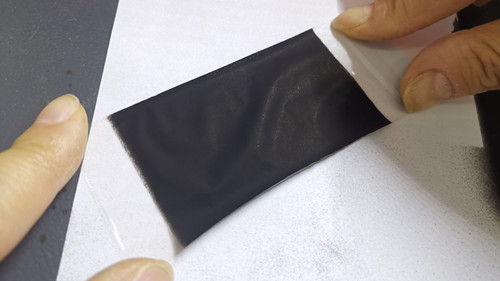Fuel Cell Catalyst Coating Systems
Catalyst production methods must meet commercial standards for mass manufacturing such as scalability, reproducibility, and quality. Conventional MEA manufacturing practices involve screen printing, flexographic printing, gravure printing, spraying or rolling, and calendering. Electrocatalyst processing falls into two distinct manufacturing methods: electrocatalyst powder formation and in situ electrocatalyst formation. Powder formation is achieved either by more conventional solution precipitation/impregnation techniques or by newer spraybased methods such as spray pyrolysis and combustion chemical vapor deposition (CCVD). In situ electrocatalyst formation involves forming the composite platinum/carbon (Pt/C) catalyst directly on the proton exchange membrane (PEM) or gas diffusion layer (GDL) and includes techniques such as physical vapor deposition (PVD), chemical vapor deposition (CVD), combustion chemical vapor deposition, reactive spray deposition technology (RSDT) and electrochemical deposition.
The drivers for each process are cost, performance, and reliability, which cannot be separated from the MEA because the electrode structure (porosity, thickness, catalyst type, ionomer content, kinetic losses, ohmic losses, and transport losses) is not only a function of the electrocatalyst itself but also of the way in which it is formed or deposited. Raw material cost reduction takes the form of improved catalyst utilization and alternative formulations, while manufacturing costs are driven down by reducing the number of processing steps, using continuous processing, and avoiding energy- or time-intensive steps such as vacuum environments.
Fuel Cell Catalyst Coating Systems. Cheersonic discusses the method and advantages of ultrasonic deposition of carbon-based platinum ink solution onto catalytic membranes in the manufacture of platinumbased fuel cells, doubling industry standard performances. Results indicate significant increase in uniform distribution of platinum particles using the ultrasonic deposition method. Measured electrochemically active Pt surface area using ultrasonic atomization was recorded as high as 71% of the total Pt particle surface area.
Fuel Cell Catalyst Coating Systems Video
Recommended Equipment
Ultrasonic Atomization Nozzle
Laboratory Ultrasonic Coating System
UAM3000 Ultrasonic Medical Devices Spraying
UAM4000 Desktop Ultrasonic Spraying Equipment
UAM4000L Benchtop Ultrasonic Spray System
UAM6000 Ultrasonic Spraying Machine
UAL100 Ultrasonic Dispersion Syringe Pump
LULP500 Ultrasonic Laboratory Device
Prosonic1000 Industrial Ultrasonic Device
Prosonic3000 Most Powerful Ultrasonic Processor

